Your Brain on Babies
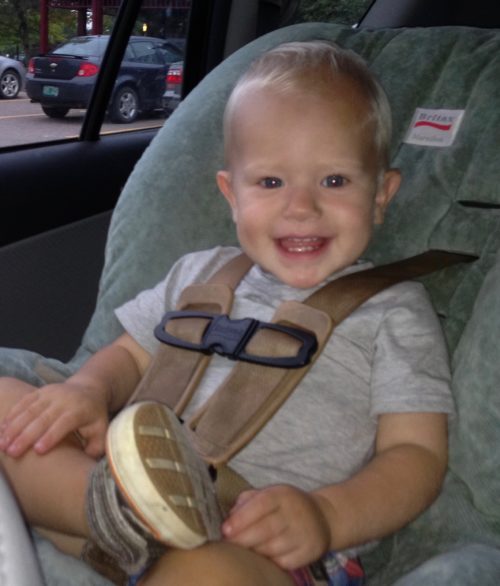
Look at that face! The instant we catch sight of a photograph like this, much less an actual baby, our brains get to work. We might smile a little, even if we don’t mean to. Of course, our brains respond to any face—young or old, known or unknown—but we respond to babies in a particular, and particularly powerful, way. It’s known as the cute response.
This deep-seated response to babies probably lay the groundwork for our keeping pets. You may think of pet-keeping as a relatively modern, sentimental, and even frivolous Western phenomenon. Surely our distant ancestors didn’t waste time and food on animals that weren’t useful. As Hal Herzog points out in his 2010 book, Some We Love, Some We Hate, Some We Eat, “From an evolutionary point of view, pets are a problem. Why should humans invest so much time, energy, and resources on creatures with whom we share no genes and who do no useful work?”
But we do, and we did.
In fact, it’s likely that the first animals that humans kept weren’t useful at all but were cute baby animals—possibly the babies of animals killed by hunters—brought back to the community and nurtured, tamed, and raised. They were pets. Much later, those species best suited to life with humans began to have babies, adapted genetically to their new ecological niche, and gradually became the domesticated animals we know. Dogs came first, by thousands of years.
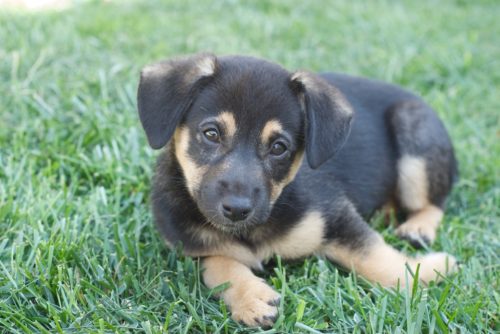
Photo: Julie Skoler
The cute response starts with two related cognitive processes: associative activation and the priming effect. As we move through daily life, our minds monitor and model the world, making as much sense as possible of every situation. Our minds swiftly and automatically summon all relevant information—conscious and unconscious connections—through a robust process called associative activation, which psychologist Daniel Kahneman describes as “a cascade of activity” in our brains. This cascade rolls into a process called priming. We are primed, mostly at an unconscious level, for whatever may come next. This explains why we sometimes react to a danger before we even consciously know it’s there. Our unconscious has got our back, so to speak.
While the priming effect is amazing, it can also be unnerving because it happens so fast and mostly outside of our conscious awareness. We’d like to think we make our own decisions, but we’re primed in ways we frequently don’t, and can’t, recognize or control.
One of these ways is how we respond to babies. When I see the photograph at the top of this article, my response is personal because I know this particular baby, but it’s more than that, too. It rises above and beyond the personal. Our unconscious calls up associations that appear to be pre-programmed, to use an awfully mechanistic term, and primes us to pay attention to and feel protective of any baby, not just the babies we know and love.
People’s responses aren’t identical, of course, but researchers have found commonalities. As John Bradshaw describes in The Animals Among Us, functional MRI scans reveal the activation of dozens of specialized areas in the brain when a subject sees a baby’s face. These areas are located all over the brain: on the left side and the right, in the cortex and the thalamus, in the more recently developed parts and the ancient ones. They include some you’d expect, such as those dedicated to attention and facial recognition, but also areas dedicated to reward, attachment, empathy, emotion, and mentalizing, the process that enables us to suss out the mental states of others. Not surprisingly, some areas are also connected with hormones, including oxytocin and vasopressin, which are part of the brain’s emotional and social systems; and dopamine, which is part of the brain’s reward system. The sight of babies even activates areas in the motor cortex that prime us for moving and speaking. This happens to women more than men, and more to some people than others, but nearly all of us fall for cute babies to some extent.
In the 1940s, the animal behaviorist and zoologist Konrad Lorenz first described the cute response as an evolutionary adaptation in mammals. It makes sense. Parents—whether bonobo, human, or red fox—who responded more positively to their babies and cared for them were more likely to pass on their genes, and the cute response became a genetic feature of mammals.
In us humans, the extreme helplessness of our young may have fostered a highly charged response. Our big brains give us extraordinary advantages, but they complicate childbirth and early childhood. Even after a long gestation, our babies must be born before they’re really ready. Unlike other mammals, whose brains don’t grow much after birth, humans’ brains keep on growing and developing. A puppy will learn how to stand at two weeks, and at four weeks will walk, run, and play. By contrast, a human baby has nine to fifteen months to go before beginning to toddle. In the meantime, they have cuteness.
This isn’t run-of-the-mill cuteness. We fall for certain kinds of cuteness more than others, and in remarkably consistent ways. Lorenz identified the key features, which he called Kindchenschema, or baby schema, that are “innate releasing mechanisms” for caretaking behavior in adults. First, there’s babyfacedness: a proportionally large round head and prominent forehead; big eyes, facing forward and positioned slightly lower on the face; and a small nose, small mouth, receding chin, and round cheeks. Next, there’s the soft round body, with short pudgy legs and arms and soft flexible skin. In other words, your classic cute baby. As Bradshaw notes, the eyes may matter most. They’re proportionally large and set below the midline of the head. The “cutest” babies, the ones who fit these patterns most closely, have the most intense effects on our brains, whether we’re conscious of it or not.
Finally, the cute response comprises more than looks, but the whole baby package. We respond to the clumsy movements, wobbling, playfulness, and helplessness of infants, toddlers, and small children—and to the sounds of babbling, cooing, laughing, and crying.
Cuteness triggers affection and delight. Our cute response is lavish, extravagant, and sometimes foolish. It crosses boundaries—including between races and ethnicities, and between species. It finds baby schema anywhere and everywhere. Stephen Jay Gould, a paleontologist and evolutionary biologist, in a whimsically serious article called “Mickey Mouse Meets Konrad Lorenz” (more on Mickey in a bit), writes: “We are…fooled by an evolved response to our own babies, and we transfer our reaction to the same set of features in other animals.” We react to pets and baby wild animals alike, even to animals we should have the good sense to fear. As a kid, I was smitten by the lion cub Elsa in the film Born Free; and even though the lesson of the story was that Elsa needed to live in the wild, I still wanted to adopt her. (Really, I wanted to scoop her up and hug her.) Lorenz saw the cross-species response in humans as evidence of the power and consistency of the Kindchenschema. It makes little evolutionary sense to respond to kittens or lion cubs, but the amped-up cute response in humans doesn’t make fine distinctions.
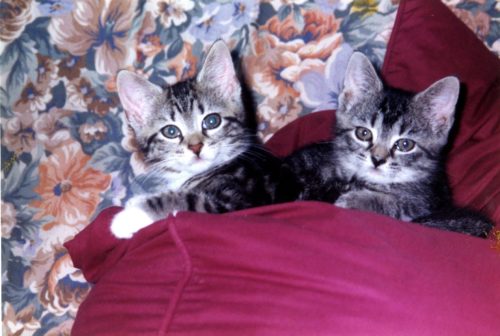
Classic cute babies! They have proportionally large heads and foreheads; small noses, small mouths, receding chins, and round cheeks; and large eyes, set slightly lower on their faces. Their big ears accentuate their foreheads and make their heads seem even larger. The classic tabby markings, the M on their foreheads and the streaks beside their eyes, highlight their eyes. And there’s the baby’s body—rounded, with short chubby legs, and loose skin and soft fur.
Here’s another classic cute baby. The man who was trying to take this puppy for a walk wasn’t making much progress since each new passerby had to stop, admire, and pet her. (And one of them had to snap a few pictures for this article.)
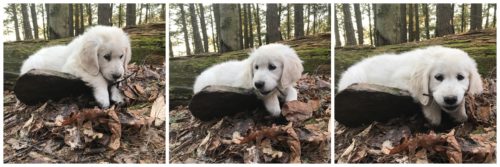
The cute response may help answer the cat conundrum. Why do we keep cats as pets? They’re a bit of a puzzle as the pet of choice for millions and millions of people. They can be persnickety and changeable, many are not particularly friendly, and some are so skittish that they avoid everybody. They don’t take to our training. They may disappear for weeks at a time, find a better home down the road and move in, or go wild. An affectionate and playful kitten may turn into an adult who wants little or nothing to do with the person it snuggled up to before. Their faces, lacking muscles, are impassive and hard (for humans) to read. For no apparent reason, they scratch or bite or both. And lots of people are allergic to them.
Don’t get me wrong. I love cats and have always loved cats. Many people, including me (see my articles “Cat People” and “Here’s Looking at You, Felis Catus”), would argue with almost every point I’ve just made. Some of their appeal may lie in the fact that cats evoke the cute response right into adulthood. Adult cats don’t fully outgrow their baby faces and may keep on tapping our “innate releasing mechanisms” for attention and care-taking. What’s more, domestic cats, who evolved as solitary and largely silent creatures in the wild, have developed a cry that sounds eerily like a baby.
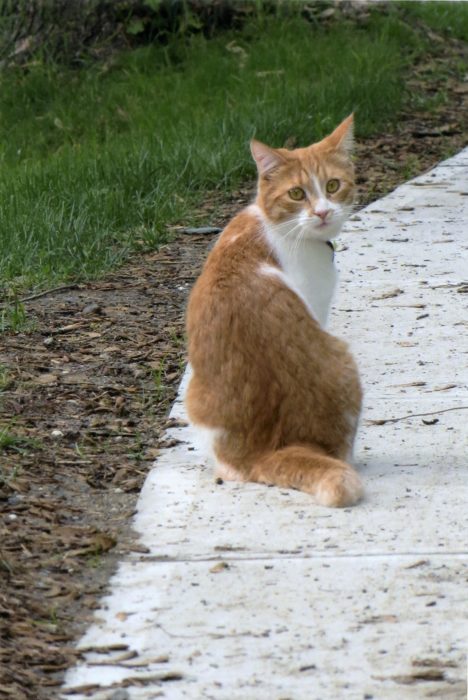
The cat down the block.
The head’s relatively big and rounded. The forehead’s prominent. The cheeks are round, the nose and snout small, the chin receding, and the mouth small. Most important, the eyes are proportionally big and set low on the face. This cat hardly evokes the response that a kitten would, but still meets the cuteness criteria in many ways.
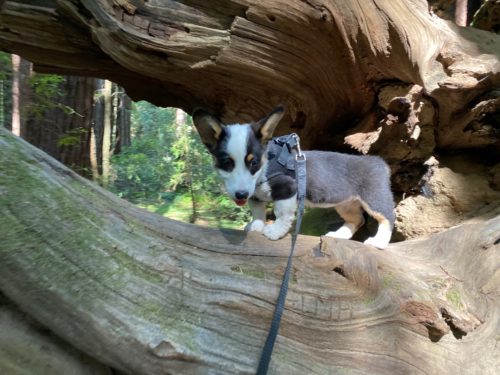
Pilot, a Pembroke Welsh corgi Photo: Rogers Marquess
Then there’s this adorable puppy. Some breeds of dog—short-legged dogs like corgis, small ones like terriers, pugs, and toy breeds—seem to have been designed to take advantage of the cute response. I say designed, but the process must have unfolded in a more organic way, since small dogs have been part of human communities as both working dogs and pets for a very long time. The short legs (of corgis, dachshunds, basset hounds, and others) stem from a single genetic mutation that is nearly as old as dogs are. Pet lap dogs, including something like the Maltese, were popular in ancient Greece and Rome.
The best-known corgis, Queen Elizabeth’s Pembroke Welsh corgis, reputedly trace their line back to the early 12thcentury when their short-legged ancestors were brought to Wales from mainland Europe. For centuries, corgis worked as cattle and sheep herders in Wales. (Some probably still do.) Those corgis, though low slung, may not have looked quite like the current breed. Early breeding was looser and focused on function. A farmer would cross the best herder with the best herder. What the dogs looked like didn’t matter much.
In the late 19th century, as dog breeding in Great Britain became a craze (one that spread across the Atlantic and elsewhere), was formalized, and shifted from function to looks and from working farms and fields to markets for the growing middle class, breeders responded to what people wanted, and many people wanted cute. At some point, breeders started to make certain breeds look more like babies—pugs—or retain puppy-like features—with their small size and short legs—even when they were adults. They may not have known the name for it, but they were using the cute response. Not surprisingly, the outcomes are hard to resist.
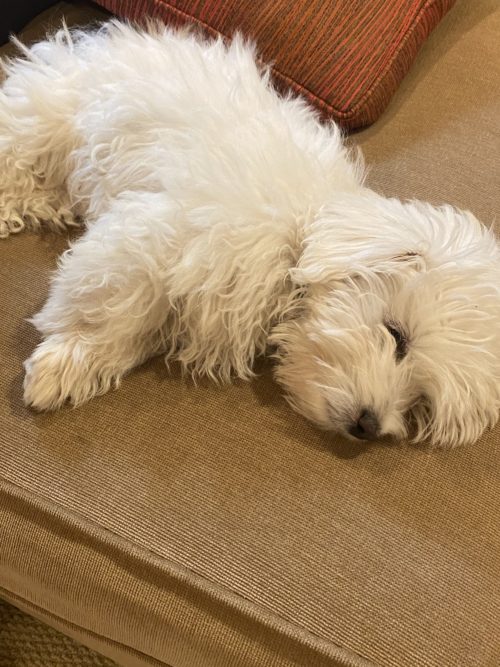
Frank, a coton de Tulear Photo: Courtney Kiernat
Then—in what may seem like a tangent, but isn’t—there’s Mickey Mouse. Mickey made his public debut in 1928 in Steamboat Willie, a cartoon that ran before a feature film at a New York theater. It was a hit. It takes clever advantage of synchronized film sound, which was still brand new, with Mickey and Minnie “playing” the animals on a steamboat as musical instruments in a goofy rendition of “Turkey in the Straw.” It’s an anarchic little film. Mickey’s a trickster—the deckhand to a beast (literally) of a boss—who’s out to avoid work and have fun, and trouble be damned.
Stephen Jay Gould’s 1979 article marked Mickey’s fiftieth birthday. Since Gould was a scientist writing a column in Natural History, his subject was not really a cartoon mouse. Rather, he wanted to teach readers about Konrad Lorenz’s theory and how readily the cute response works “in biologically inappropriate” ways. He used Mickey to show this in action. As Mickey became the symbol of the growing Disney empire and one of the most recognizable figures in the country, the company tamed his trickster ways and made him politer and more palatable. Gould notes that “his appearance changed in tandem” with his personality, and changed in very particular ways.
The Disney animators gradually “grew” Mickey in reverse, from adulthood toward babyhood. Maybe this was conscious, maybe not. The original anthropomorphized Mickey hardly resembled a real-life mouse, but more so than he later did. He also looked more like an adult: smaller head, face, and eyes (beady, actually), and longer skinny arms and legs. Gould, using his “best pair of dial calipers,” carefully measured Mickey’s transformations. His eyes grew from 27 to 42 per cent of the length of his head. What had been his whole eye in the early days became merely the pupil of his new eye, and the whites of his eyes steadily expanded. His head grew, too, though only from 42.7 to 48.1 per cent of the length of his body. Instead, they moved his ears back in order to make his forehead appear substantially larger—and more like a baby’s. Gould noticed other changes, as well: Mickey’s skinny limbs thickened and shortened, and he acquired joints so he could move more “floppily.” His snout broadened to make it look shorter. Knowingly or not, the animators kept emphasizing the baby schema as they altered Mickey’s look, increasing his cute appeal. Gould sums up the changes: Mickey “assumed an ever more childlike appearance as the ratty character of Steamboat Willie became the cute and inoffensive host to a magic kingdom.”
We don’t need science to tell us that we’re suckers for cute baby animals, human or otherwise. We already knew that. Advertisers know that. But what fascinates me is that we’re not simply sentimental fools. Our susceptibility to roly-poly puppies and our addiction to YouTube videos of kittens actually grow out of serious, ancient business. As John Bradshaw explains, our “instinctive reaction to cuteness is a part of our mammalian heritage that ensured the survival of our offspring, going back millions of years.” So the next time you get sucked into a vortex of cute kitten videos—or meet an adorable baby, smile, lean forward, and start babbling—you can thank evolution.
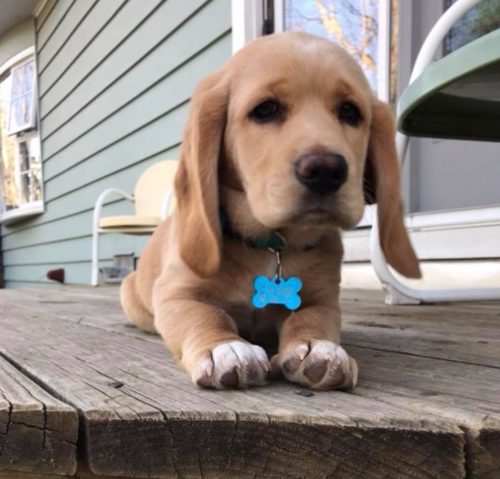
Lefty, a basset hound mix
References (in the order of their first appearance):
Hal Herzog. Some We Love, Some We Hate, Some We Eat: Why It’s So Hard to Think Straight About Animals. Harper, 2010.
Daniel Kahneman. Thinking, Fast and Slow. Farrar, Straus and Giroux, 2011.
John Bradshaw. The Animals Among Us: How Pets Make Us Human. Basic Books, 2017.
Stephen Jay Gould. “Mickey Mouse Meets Konrad Lorenz.” Natural History, May 1979, 30-36.
More about the photographs
Photo of Pilot. Pilot has her own Instagram handle: _Pilot_Jones_322
Photo of Frank. Find more photos
of dogs at Courntey Kiernat’s Instagram: Threeandaquarterdogs
